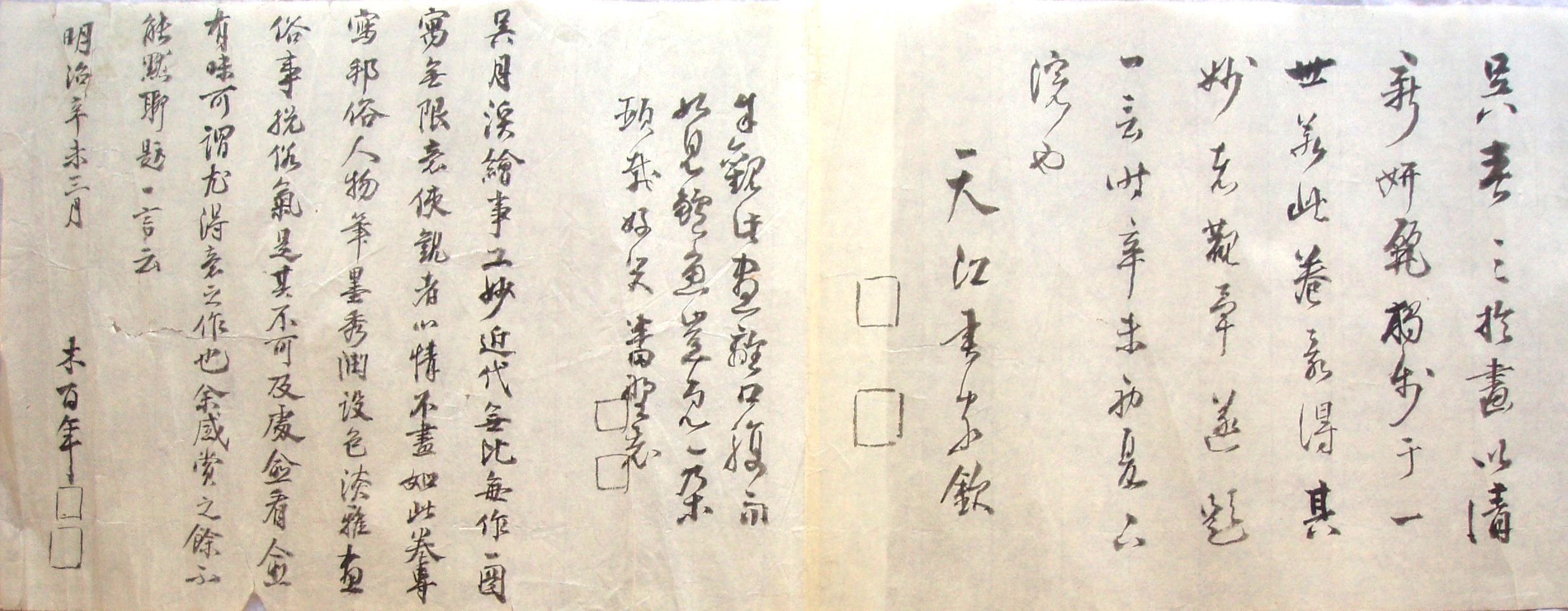

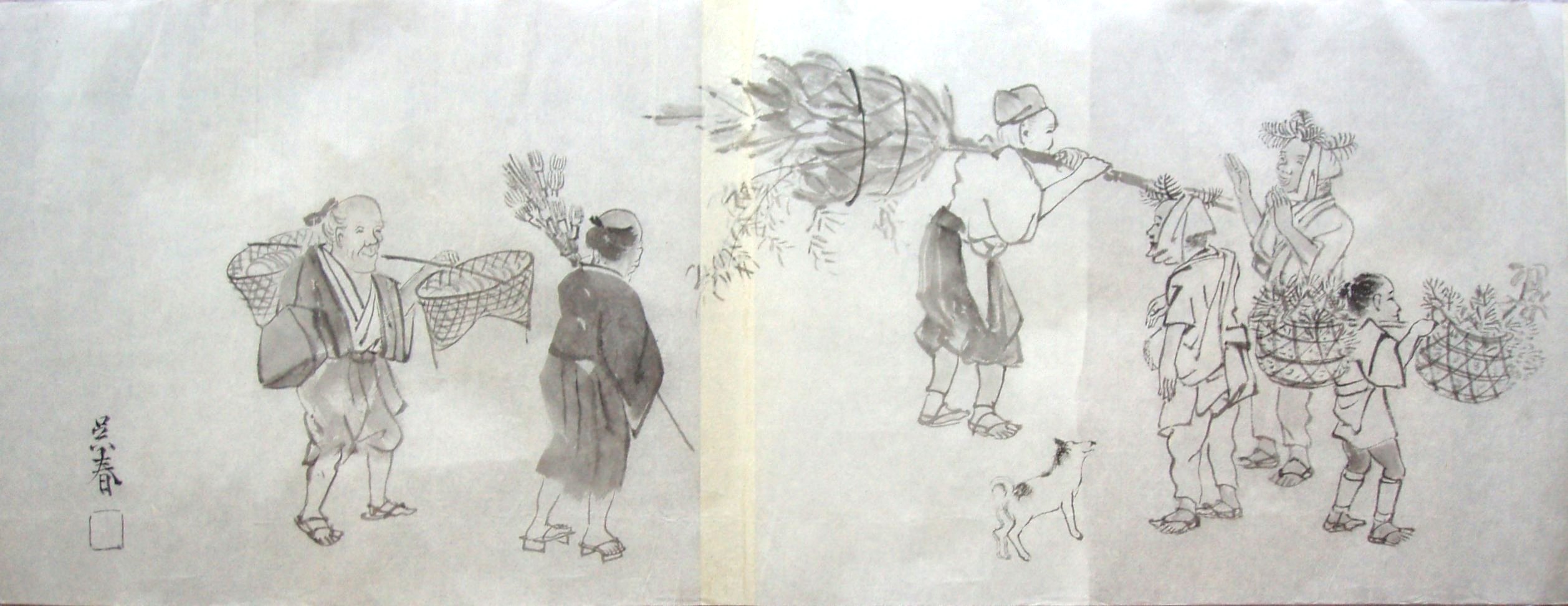
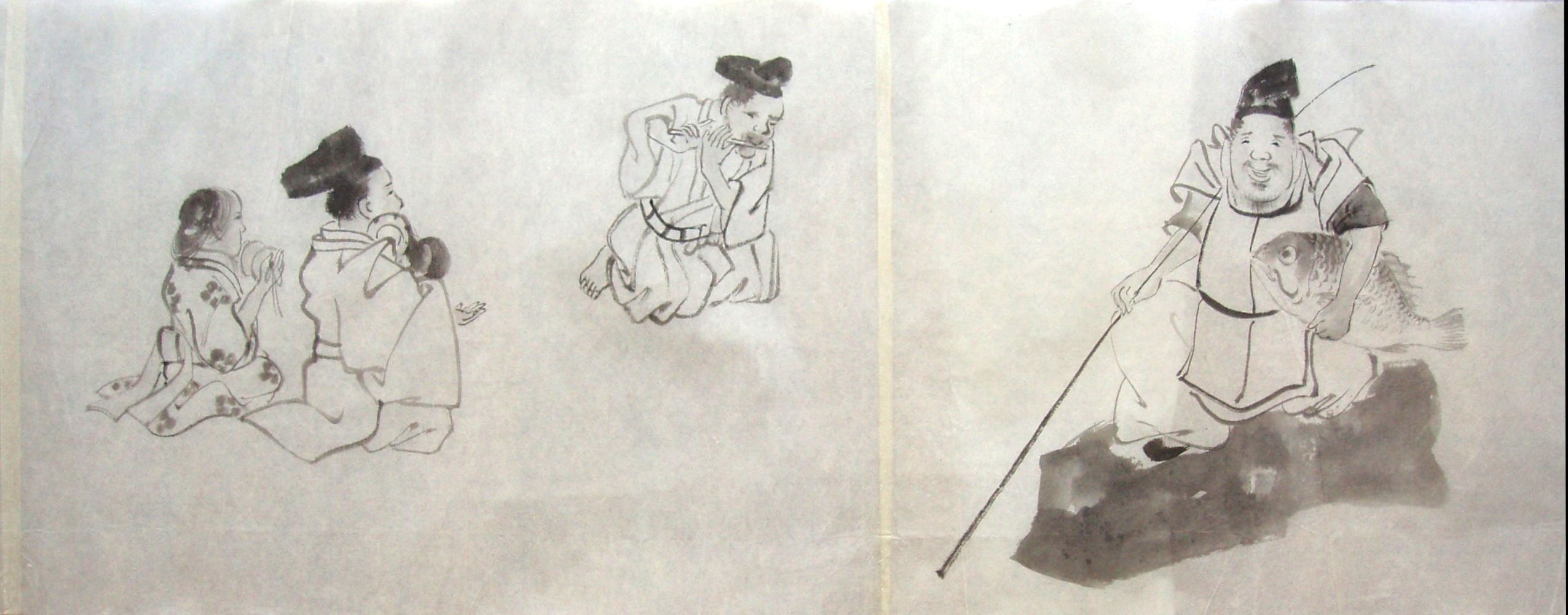
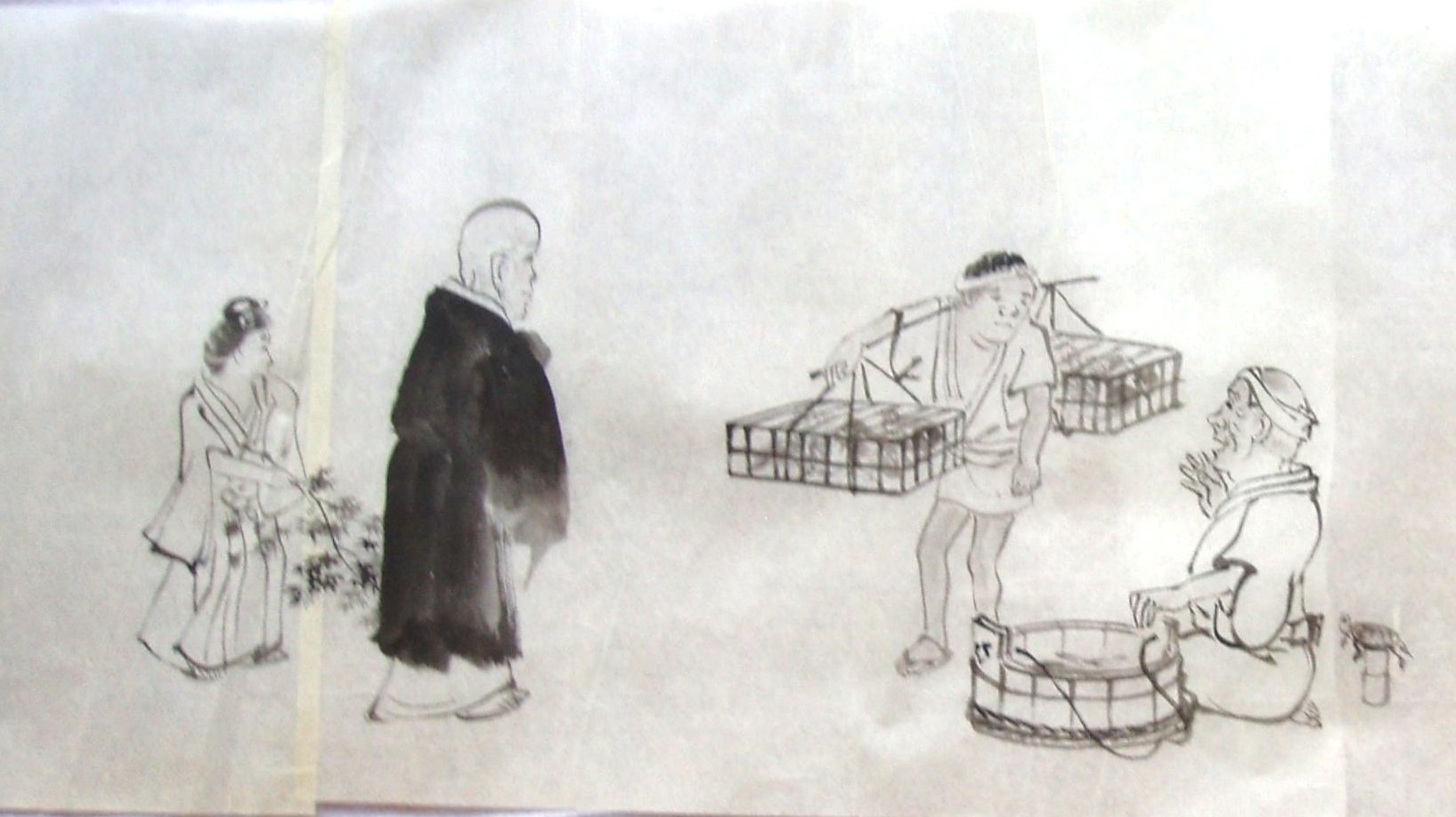

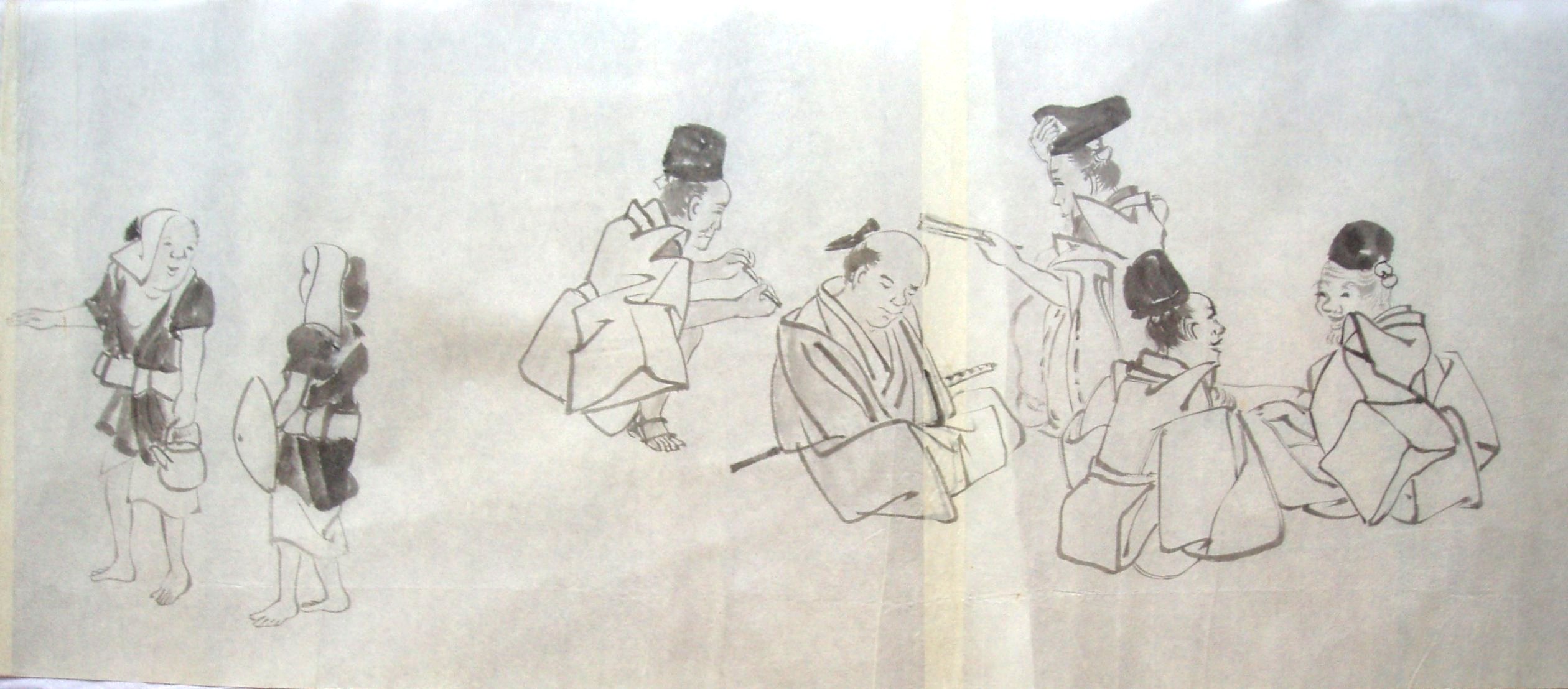
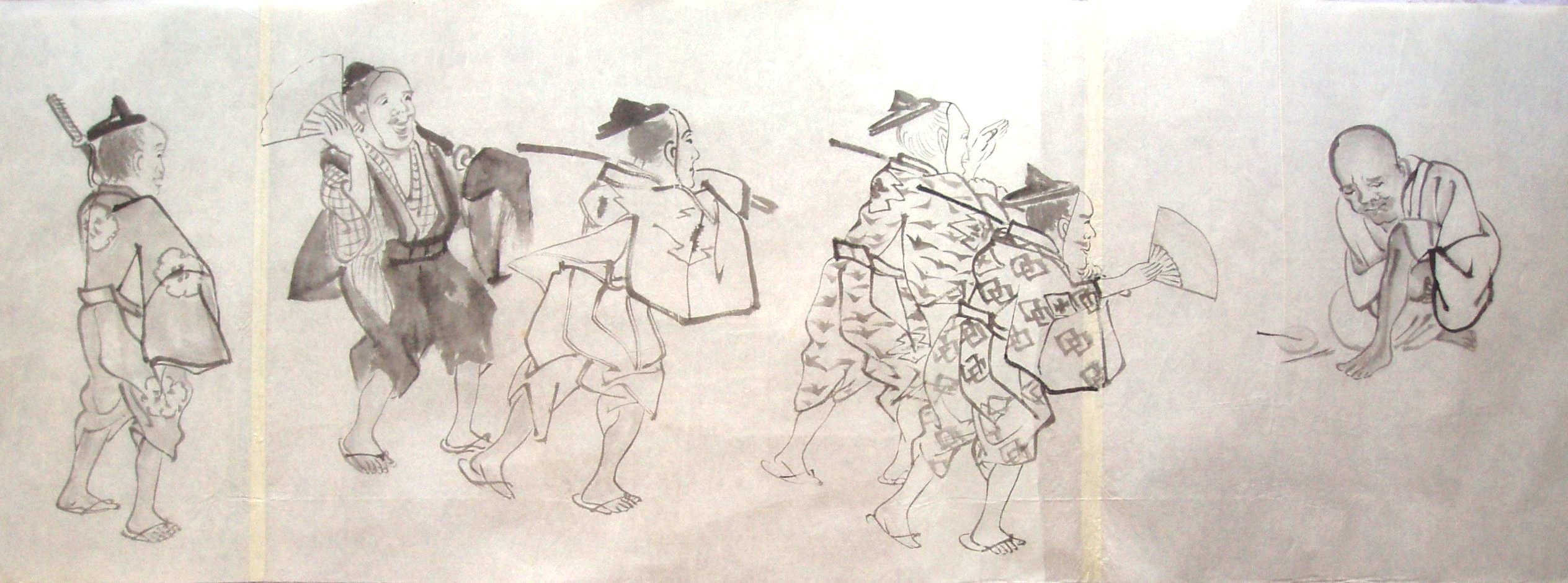
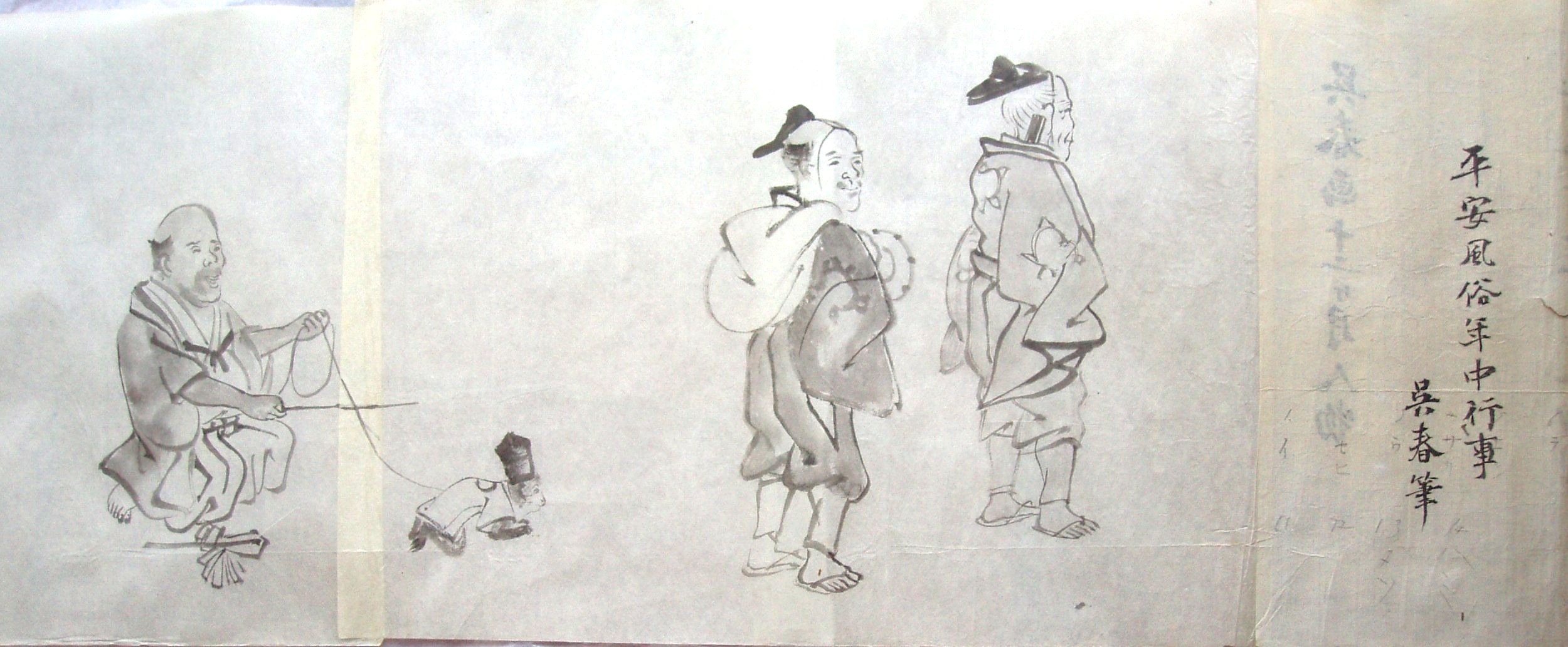
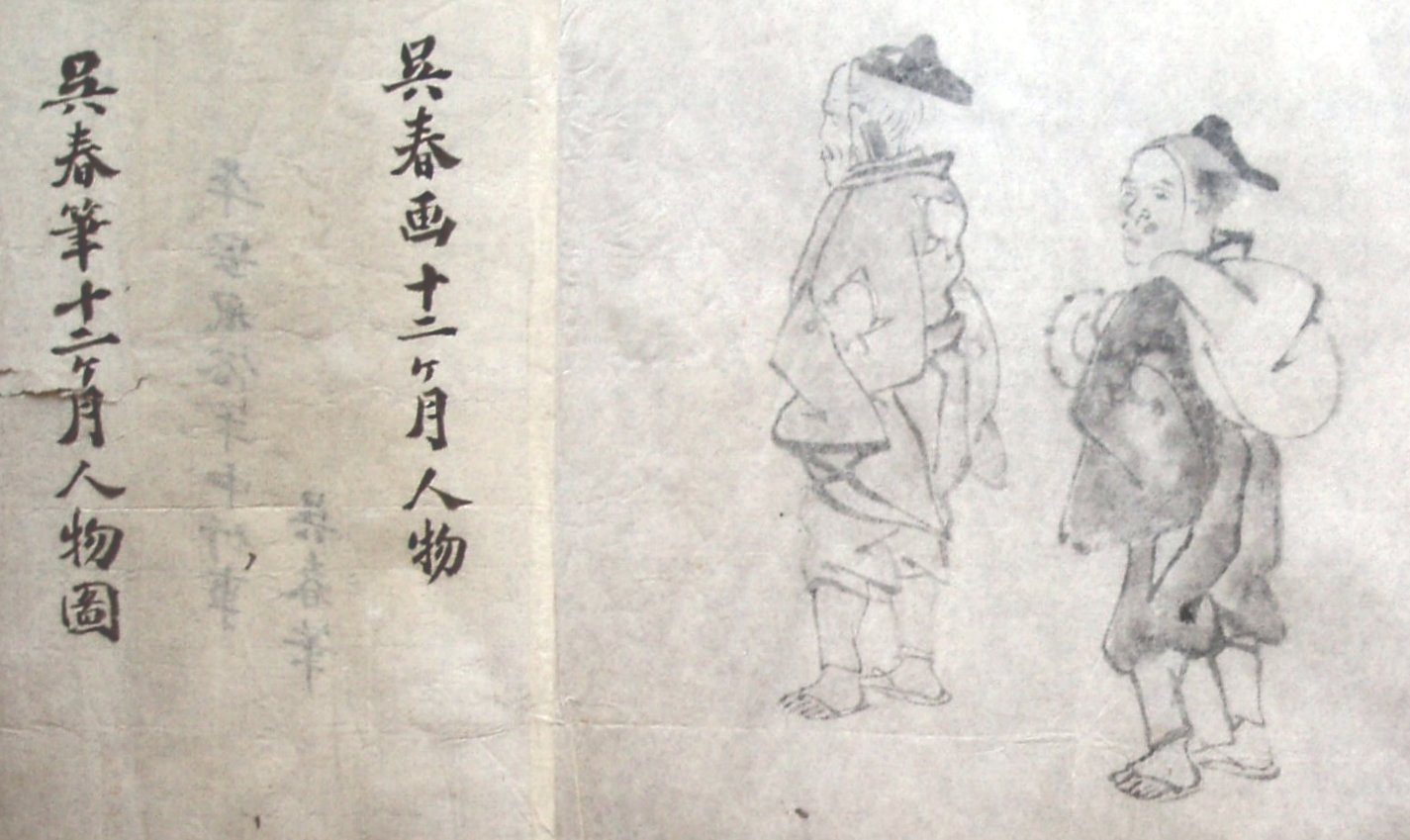
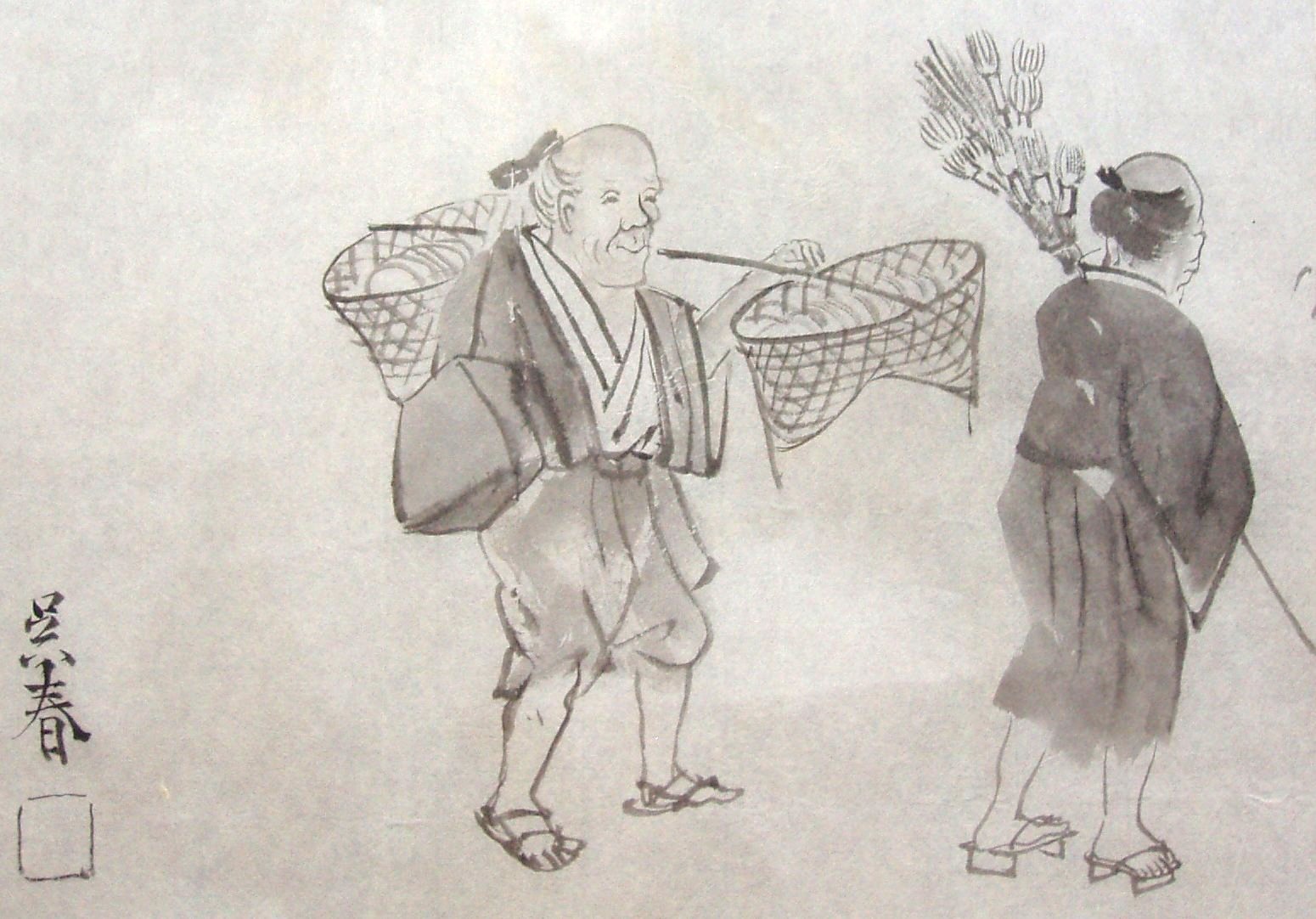

Handscroll Depicting 12 Monthly Figural Drawings Associated with
the Annual Custom Events of Japan During Ping-An Times (794-1185)
Drawn by the 17c Japanese Okyo-Shijouha Painting School Master Matsumura Goshun (1752-1811)
日本17世紀圓山四條南畫派大師吳春(1752-1811)手繪平安風俗年中行事之十二個月人物圖繪卷
Dimension = 473 cm X 25 cm
Goshun 吳春 (1752-1811)
N. Matsumura Toyoaki 松村豐昌 A. Hakubo 伯望 F. N. Bunzo 文藏 Kaemon 嘉右衛門 Go. Yuho 裕甫 Katen 可轉 Sompaku Sonjuhaku 存充白Sonseki 孫石 Shoutei 蕉雨亭 Hyakushodo 百晶堂 Gekkei 月溪 Goshun 吳春 S. Shijo school (founder) Studied under Onishi Suigetsu and later Buson. After the death of Buson, assoicated with Okyo. L&C. Born in Owari. Lived in Settau and Kyoto. Founded a new school, taking good points of Buson and Okyo. Skilled in making haikai poems and in calligraphy. Sp. landscape, figures, flowers and birds.
Matsumura Goshun 松村吳春 (1752-1811)
established a school on Shijou 四條 street in Kyoto, which later became known as the Shijouha 四條派. Goshun had begun his career as a Nanga 南畫 artist, studying under Yosa Buson 與謝蕪村 (1716-83). When Buson died, Goshun changed painting styles in mid-career by turning to Oukyo for inspiration. The Shijou school is similar to the Maruyama school in subject matter and technique. However, rather than Oukyo's emphasis on meticulous detail, the Shijou style retained a freer, softer brushwork stemming from Goshun's training. Of Goshun's students, his younger brother, Matsumura Keibun 松村景文 (1779-1843), and Okamoto Toyohiko 岡本豊彥 (1773-1845) are most famous. Toyohiko's student Shibata Zeshin 柴田是真 (1807-91) is also well-known. Although there are subtle differences between the Maruyama and Shijou styles, they lessened with time. The work of later followers is marked by increasing mannerism and virtuoso brushwork with less attention to nature. The collective term Maruyama-Shijou school has been used since about the end of the Edo period.
Matsumura Goshun 松村吳春 (1752-1811)
Matsumura Goshun learned painting from Onishi Suigetsu (大西酔月) and later studied both painting and Haiku poetry from Yosa Buson (與謝蕪村). After Buson’s death, Goshun sought to become a student in Maruyama Okyo’s (圓山應舉) atelier, but Okyo refused to accept Goshun as a pupil. The two men, however, became good friends. Goshun created his own painting style which incorporated influences from Okyo and Buson. So popular was Goshun’s technique that he attracted many students of his own and founded the Shijo School, so named because Goshun lived on Shijo Street (四條) in Kyoto. The Shijo style had a great influence on 19th-century Japanese art. Among Goshun's most prominent students were his younger brother, Matsumura Keibun, and Okamoto Toyohiko.
日本平安時代始於遷都平安京(今京都)的794年,止於平安家滅亡的1185年,延續將近四個世紀,是日本歷史上時間最長的時代。其間於894年廢止了遣唐使,中斷絕中日間官方往來,一度脫離中國文化影響,出現日本本土民族化風潮,整個美術領域都在尋求與以平安京為中心的風土人情相適應的和風表現形式,這時期發展開來的主要繪圖形式稱“ 大和繪 ”。大和繪主要種類是《繪卷物》以及《繪草紙》。
所謂繪卷物是用畫卷表現日本文學作品,是平安時代中內容最豐富、技巧最高、最富民族特色的畫種。
Click Here to See Other Japanese Paintings
Click Here to See Other Paintings
Click Here to Go Back to Homepage